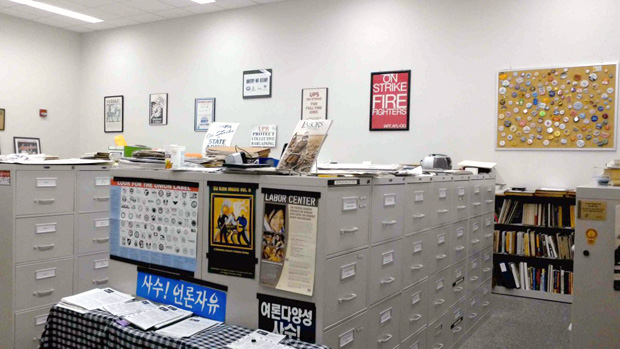
The University of Hawaiʻi–West Oʻahu Center for Labor Education and Research won the 2016 Reference and User Services Association John Sessions Memorial Award honoring libraries that recognize the history and contributions of the labor movement in the United States.
Located in the UH West Oʻahu Library, the Center for Labor Education and Research maintains a research collection and archive of labor history and law containing clipping files on local unions in Hawaiʻi, as well as an ever-growing collection of contracts, union newsletters, books and pamphlets focusing on Hawaiʻi’s rich labor history.
In addition, the archive houses the Rice and Roses television series about Hawaiʻi’s labor movement and rare books and texts including the Na Lula Halawai text translating 1854 pre-territorial parliamentary procedures from Native Hawaiian to English.
Preserving history for future generations
“The mission of the labor archive at the Center for Labor Education and Research is to preserve labor history materials for future generations, protect the artifacts and make them accessible for public use, and defend the importance of working class history,” said Kate Kosturski, award committee chair.
The UH West Oʻahu Center for Labor Education and Research will be honored with an award plaque sponsored by the Department for Professional Employees, AFL-CIO at the Reference and User Services Association Achievement Awards Ceremony and Reception in Orlando this June.

About the Center for Labor Research and Education
The Center for Labor Education and Research is an endowed, outreach program established in 1976 that provides labor education, research and labor-related programs to workers, their organizations, university students and the general public through a variety of methods including classroom instruction, seminars, workshops, publications and the use of the public media.
—From E Kamakani Hou
—By Julie Funasaki Yuen

